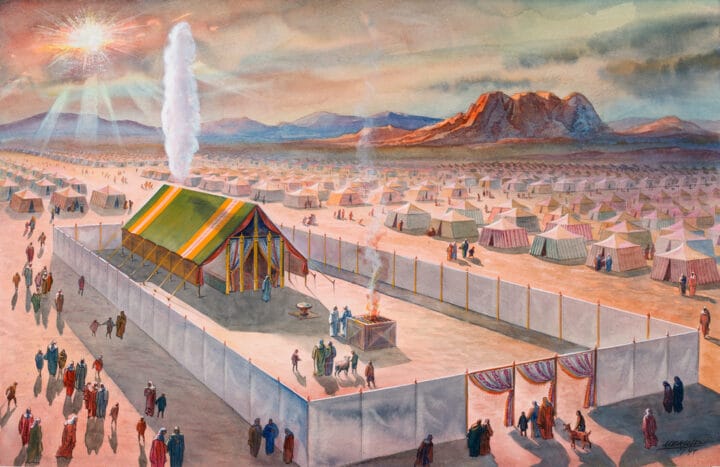Daily Lesson for Wednesday 14th of May 2025
Following the leading of God’s presence in the cloud, the Israelites would stop in their journey to the Promised Land, set up the tabernacle, and then the tribes would pitch their camps around it—three tribes on each side. The Presence of God would descend into the Most Holy Place and take up residence in the midst of His people.
There was one dominant tribe on each of the four sides of the tabernacle. According to Numbers 2:1-34, who were these four dominant tribes?
Numbers 2:3 (East):
Numbers 2:10 (South):
Numbers 2:18 (West):
Numbers 2:25 (North):
Notice that each dominant tribe flew its own “standard,” or special flag, to designate who they were.
While the Scriptures are not explicit in describing what was on each flag, there is an interesting tradition—loosely based on the tribal characteristics described in Genesis 49:1-33 and Deuteronomy 33:1-29—that assigns one of the four faces to each of the four compass points. “According to rabbinical tradition, the standard of Judah bore the figure of a lion, that of Reuben the likeness of a man or of a man’s head, that of Ephraim the figure of an ox, and that of Dan the figure of an eagle; so that the four living creatures united in the cherubic forms described by Ezekiel were represented upon these four standards.”—Carl Friedrich Keil and Franz Delitzsch, Commentary on the Old Testament, (Peabody, MA: Hendrickson, 2011), vol. 1, p. 660.
It is possible to read too much into tradition, of course, but it is still interesting to compare this ancient tradition with the Bible’s description of the New Jerusalem. An interesting pattern emerges: there are gates representing three tribes on all four sides of the city (Revelation 21:12-13).
The descriptions of both the camp of Israel and the New Jerusalem underscore one crucial fact: God intends to pull humanity close to His throne. The book of Revelation teaches us that “the Lord God Almighty and the Lamb are its temple” (Revelation 21:22, NKJV).
|
Of course, we don’t live in the camp of Israel. But how can we, in our own lives now, draw close to the presence of God? |
 (0)
(0)



